When most people think of water birds, they imagine a group of ducks gliding across the water. Yet, the pelican is a much more intriguing type of water bird. Sure, they love to spend time near the water like others, but they also have massive wingspans, large pouches they use to catch food, and some of them drop from the sky to kill their prey. Would you like to learn more? Then check out these 10 incredible pelican facts and learn what these creatures are all about!

10. Pelicans Don’t Just Limit Their Diet to Fish
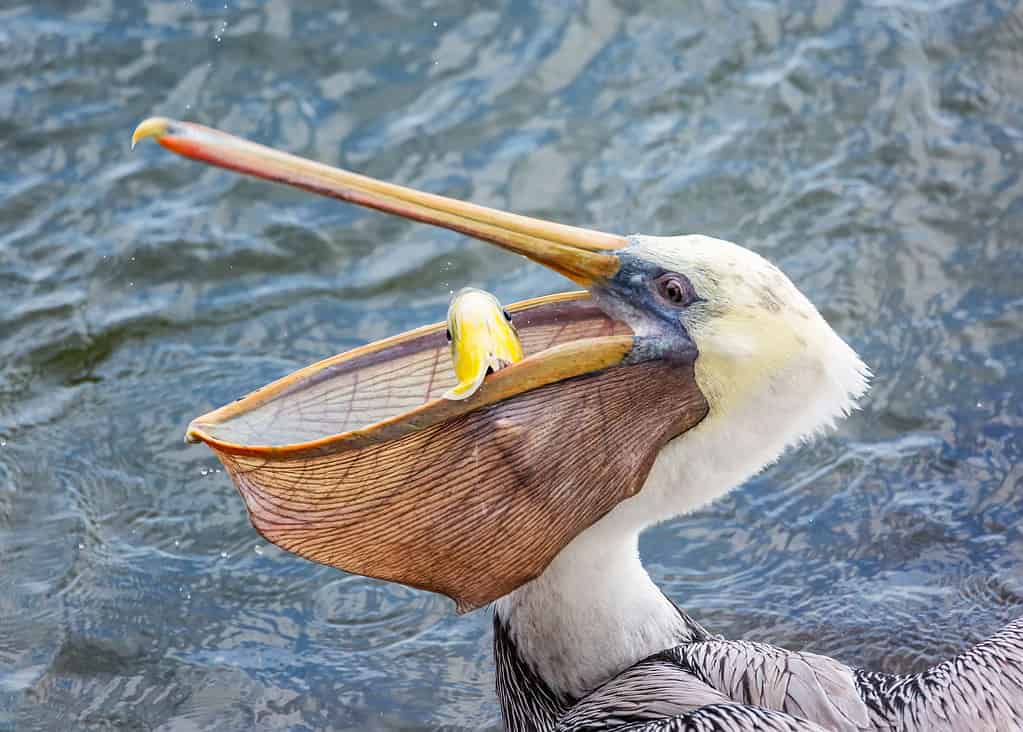
Pelicans are usually observed chowing down on fish, though they also consume mammals, turtles, insects, and even other birds.
©iStock.com/
Although pelicans are often seen gobbling their fair share of fish, they aren’t solely pescatarian. They have been seen eating turtles, mammals, insects, and even other birds. It’s not unusual to see pelicans gobbling up other water birds, too.
9. Pelicans Don’t Store Food in Their Pouch

The pelican’s pouch is used to hold water so it can be strained while catching food.
©Julie rubacha/Shutterstock.com
No matter what the pelicans are eating, they don’t store their food in their giant pouches. It may seem that they do, but that’s not what happens. Instead, the pelican will gobble up a huge pouchful of water containing whatever food they had their eyes on. Next, they drain the water from their pouch by tilting their heads. After they drain the water from their pouch, they swallow the fish they have eaten.
They do not store food in their pouches for long periods, so don’t count on spotting a trove of fish in a pelican’s pouch.
8. You Can Find Pelicans on Every Continent but Antarctica

Pelicans are rarely found in deep ocean environments and do not inhabit Antarctica at all.
©robert mcgillivray/Shutterstock.com
Pelicans are large birds that can fly rather high and far. Moreover, they enjoy being near water in warm regions. Thus, pelicans are found on every continent except Antarctica, and they are less common in some regions of the world, like the inner part of South America. They are rarely found in deep ocean waters. Some vagrant pelicans have been found in more far-flung places, though.
7. Pelicans Can Grow to Have a 10-Foot Wingspan or More
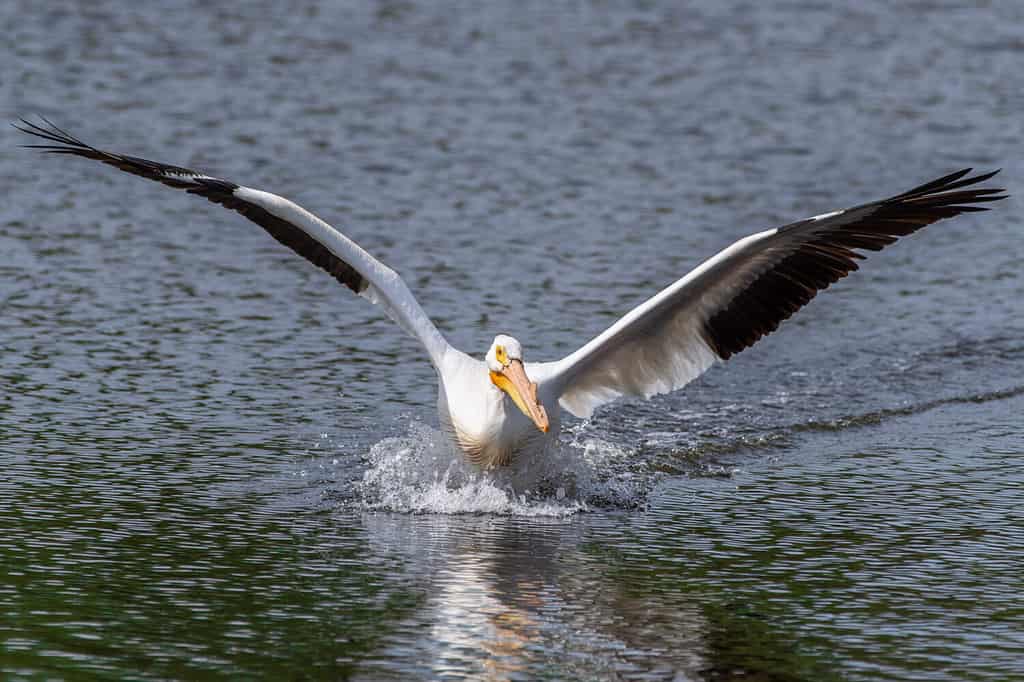
Pelicans have massive wingspans ranging from 9 to 10 1/2 feet in length.
©Mike Lynds/Shutterstock.com
Pelicans can have a massive wingspan. Some of them have wingspans that measure over 10 feet or more! For example, the Dalmatian pelican has a wingspan that measures between 9 and 10.5 feet in length, making it the largest member of the pelican family. Their large wings allow these birds to soar despite their heavy bodies.
6. Pelicans Are Monogamous from Time to Time

While pelicans are seasonally monogamous, they do not mate for life.
©iStock.com/
Some people romanticize the idea of monogamous wild animals. Pelicans are often included on the lists of animals that are dedicated to one partner. The truth is a little murkier, though. You see, pelicans are only seasonally monogamous. They will stay with their one partner through the breeding season, but they do not pair for life.
Instead, once the season has come to an end, the two birds part ways and they may or may not return to the same partner the following year.
5. Some Pelicans Hunt Together

Some pelicans can cooperatively hunt for a meal.
©iStock.com/CalinStan
Finding food in and around the water can be difficult. Pelicans are not raptors that can swoop down on unsuspecting mammals and fly away. They have to be in the water and ready to gobble up food at a moment’s notice.
When they hunt together, pelicans will herd fish toward a shallow area of water, form a line, and then start gobbling as many as they can. With the right density of fish in an area and the right number of pelicans, between 2 and 10, these birds can reap a good amount of food.
4. Pelicans Are Some of the Heaviest Flying Birds
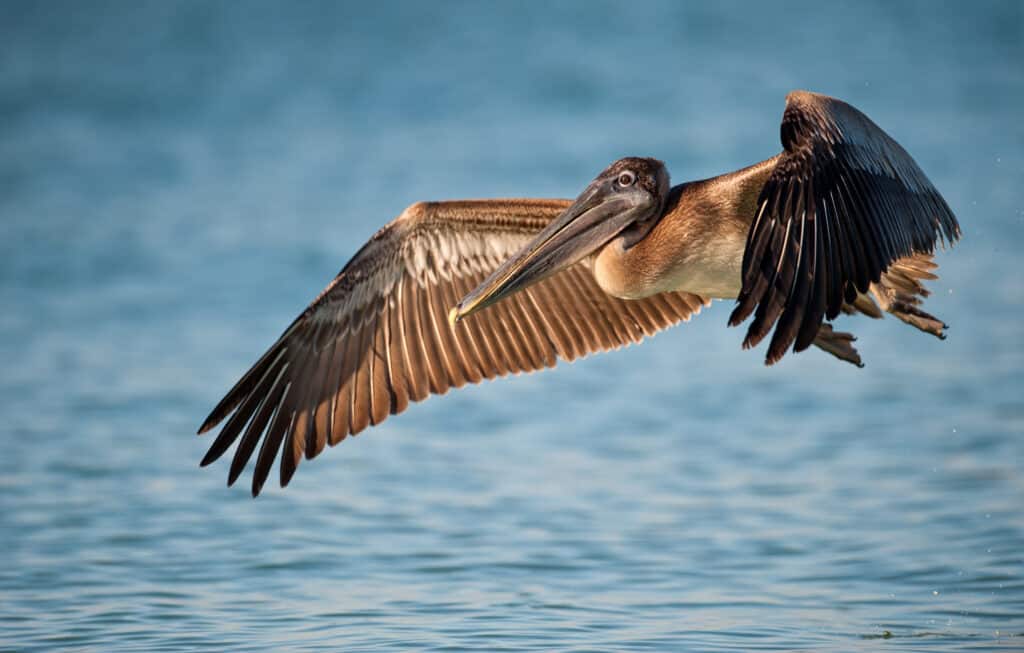
Pelicans can average in weight from 6lbs to a whopping 33lbs!
©Nagel Photography/Shutterstock.com
Steller’s Sea Eagle is the heaviest eagle in the world, and it weighs about 20 pounds at maximum. However, the Dalmatian pelican weighs about 21 pounds at its top weight, and it has a wingspan that measures over 10 feet. Despite its weight, this bird can take to the skies with grace and agility. On the whole, pelicans are some of the heaviest flying birds.
3. The American White Pelican Grows a Horn
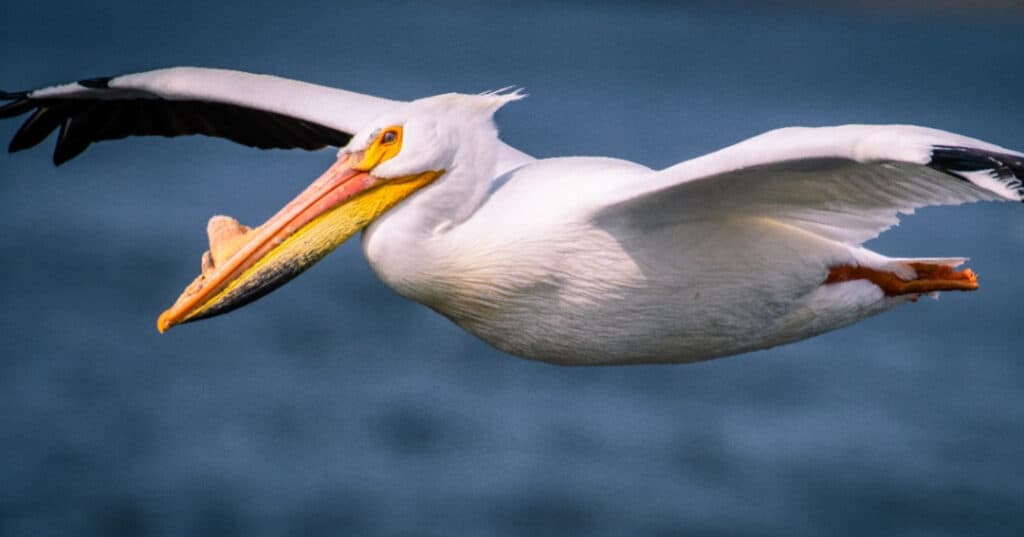
The American white pelican has a large horn on top of its long beak that appears only during mating season. It’s a symbol that the bird is ready to breed.
©Jerek Vaughn/Shutterstock.com
Some pelican species have very unique features. The American White pelican is the only one of them that grows a large bump or horn on its beak. This only occurs during mating season, though, and this horn demonstrates that they are ready to breed. The structure serves no other purpose than that!
The interesting thing is that the horn is temporary. After they have mated or finished laying their eggs, they lose the horn, and it grows back during the following year!
2. A Pelican’s Pouch Holds Up to Three Gallons of Water
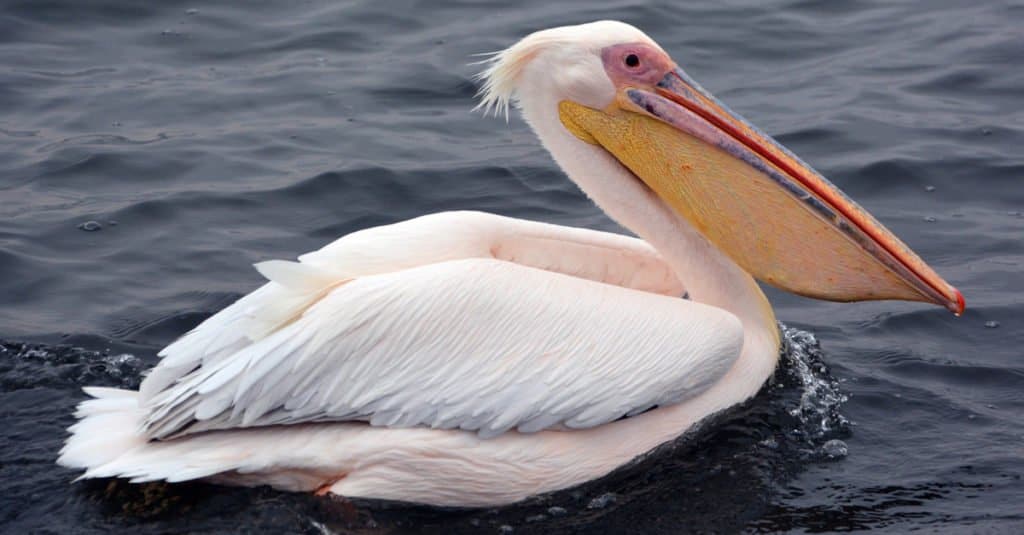
The pelican’s pouch is designed to store up to three gallons of water which helps it filter the food it captures.
©meunierd/Shutterstock.com
We’ve already mentioned that the pelican’s pouch is not designed to store food for long periods of time. While they are hunting, though, they can take in up to three gallons of water and then filter it out to see what food they captured. The flexibility of their pouch structure is simply incredible!
1. Some Pelicans Dive-Bomb into the Water to Catch Fish
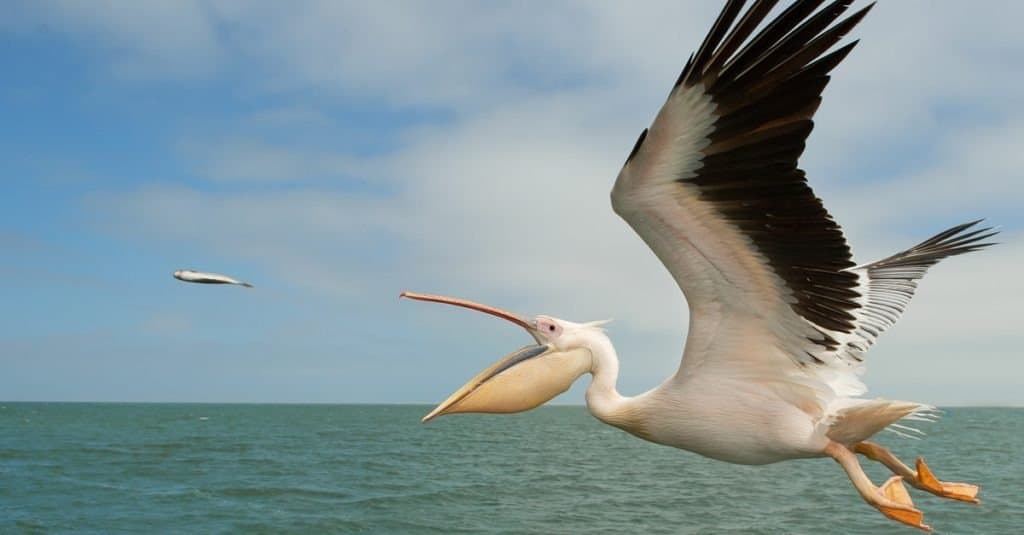
Pelicans can hunt for food in many different ways.
©MZPHOTO.CZ/Shutterstock.com
Not all pelicans just wait in shallow water to capture a meal. Some pelicans take a far more aggressive and proactive approach. For example, the brown pelican and the Peruvian pelican plunge into the depths of the water to capture their meals.
They fly up to as high as 60 feet in the air and then dive at fish in the water. The air sacs beneath their skin help cushion the initial blow, as does the way the pelicans shift their bodies before impact. The brown pelican doesn’t spear the fish with its bill, though. This bird dives into the water, opens its bill, and traps a large amount of water and fish in its pouch. Once it returns to the surface, it drains the water and eats its catch of the day!
The pelican might seem like a mild-mannered bird, but there is more to these creatures than first meets the eye. They can hunt effectively and cooperatively. We hope that you enjoyed these 10 incredible pelican facts and that you are motivated to learn more about pelicans and their lifestyles!
Summary of 10 Incredible Pelican Facts
| Number | Pelican Facts |
|---|---|
| 1 | Some Pelicans Dive-Bomb into the Water to Catch Fish |
| 2 | A Pelican’s Pouch Holds Up to Three Gallons of Water |
| 3 | The American White Pelican Grows a Horn |
| 4 | Pelicans Are Some of the Heaviest Flying Birds |
| 5 | Some Pelicans Hunt Together |
| 6 | Pelicans Are Monogamous from Time to Time |
| 7 | Pelicans Can Grow to Have a 10-Foot Wingspan or More |
| 8 | You Can Find Pelicans on Every Continent but Antarctica |
| 9 | Pelicans Don’t Store Food in Their Pouch |
| 10 | Pelicans Don’t Just Limit Their Diet to Fish |
The photo featured at the top of this post is © iliuta goean/Shutterstock.com
Thank you for reading! Have some feedback for us? Contact the AZ Animals editorial team.






